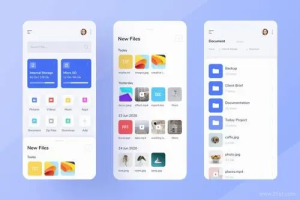内容目录
- —— 🛠️ 准备工作 🛠️
- —— 📦 安装必要的工具和库 📦
- —— 🚀 实现 MQTT 协议 🚀
- —— 🌟 实现 CoAP 协议 🌟
- —— 🚨 常见问题及解决方法 🚨
- —— 🌟 结语 🌟
随着物联网(IoT)技术的迅速发展,设备之间的高效通信变得尤为重要。MQTT 和 CoAP 是两种广泛应用于物联网领域的协议,它们分别适用于不同的场景。本文将详细介绍如何在 Linux 系统上实现这两种协议,帮助你构建高效的物联网应用。
![图片[1]-在Linux上搭建MQTT和CoAP物联网协议环境-连界优站](https://www.6x66.cn/wp-content/uploads/2024/11/image-98.png)
🛠️ 准备工作 🛠️
在开始之前,确保你的系统满足以下要求:
- Linux 发行版:本文以 Ubuntu 为例,但其他发行版的步骤类似。
- 开发工具:安装必要的开发工具和库,如 GCC、CMake 等。
- 网络环境:确保你的系统能够访问互联网,以便下载所需的软件包。
📦 安装必要的工具和库 📦
- 更新系统:
sudo apt-get update
sudo apt-get upgrade- 安装开发工具:
sudo apt-get install build-essential cmake🚀 实现 MQTT 协议 🚀
- 安装 Mosquitto:
sudo apt-get install mosquitto mosquitto-clients- 启动 Mosquitto 服务器:
sudo systemctl start mosquitto
sudo systemctl enable mosquitto- 编写 MQTT 客户端代码:
- 订阅者:
#include <stdio.h> #include <stdlib.h> #include <string.h> #include <MQTTClient.h> #define ADDRESS "tcp://localhost:1883" #define CLIENTID "Subscriber" #define TOPIC "test/topic" #define QOS 1 #define TIMEOUT 10000L void messageArrived(void *context, char *topicName, int topicLen, MQTTClient_message *message) { char payload[1024]; strncpy(payload, (char *)message->payload, message->payloadlen); payload[message->payloadlen] = '\0'; printf("Message arrived: %s\n", payload); MQTTClient_freeMessage(&message); MQTTClient_free(topicName); } int main() { MQTTClient client; MQTTClient_connectOptions conn_opts = MQTTClient_connectOptions_initializer; int rc; MQTTClient_create(&client, ADDRESS, CLIENTID, MQTTCLIENT_PERSISTENCE_NONE, NULL); conn_opts.keepAliveInterval = 20; conn_opts.cleansession = 1; if ((rc = MQTTClient_connect(client, &conn_opts)) != MQTTCLIENT_SUCCESS) { printf("Failed to connect, return code %d\n", rc); exit(EXIT_FAILURE); } MQTTClient_subscribe(client, TOPIC, QOS); MQTTClient_setCallbacks(client, NULL, NULL, messageArrived, NULL); printf("Subscribed to topic %s\n", TOPIC); while (1) { // Wait for messages to arrive } MQTTClient_disconnect(client, 10000); MQTTClient_destroy(&client); return rc; } - 发布者:
#include <stdio.h> #include <stdlib.h> #include <string.h> #include <MQTTClient.h> #define ADDRESS "tcp://localhost:1883" #define CLIENTID "Publisher" #define TOPIC "test/topic" #define QOS 1 #define TIMEOUT 10000L int main() { MQTTClient client; MQTTClient_connectOptions conn_opts = MQTTClient_connectOptions_initializer; int rc; MQTTClient_create(&client, ADDRESS, CLIENTID, MQTTCLIENT_PERSISTENCE_NONE, NULL); conn_opts.keepAliveInterval = 20; conn_opts.cleansession = 1; if ((rc = MQTTClient_connect(client, &conn_opts)) != MQTTCLIENT_SUCCESS) { printf("Failed to connect, return code %d\n", rc); exit(EXIT_FAILURE); } while (1) { char message[1024]; printf("Enter message: "); fgets(message, sizeof(message), stdin); message[strcspn(message, "\n")] = '\0'; MQTTClient_message pubmsg = MQTTClient_message_initializer; pubmsg.payload = message; pubmsg.payloadlen = strlen(message); pubmsg.qos = QOS; pubmsg.retained = 0; MQTTClient_deliveryToken token; MQTTClient_publishMessage(client, TOPIC, &pubmsg, &token); printf("Waiting for up to %d seconds for publication of %s\n" "on topic %s for client with ClientID: %s\n", (int)(TIMEOUT / 1000), message, TOPIC, CLIENTID); rc = MQTTClient_waitForCompletion(client, token, TIMEOUT); printf("Message with delivery token %d delivered\n", token); } MQTTClient_disconnect(client, 10000); MQTTClient_destroy(&client); return rc; }
- 编译和运行:
gcc -o subscriber subscriber.c -lMQTTClient
gcc -o publisher publisher.c -lMQTTClient
./subscriber &
./publisher🌟 实现 CoAP 协议 🌟
- 安装 libcoap:
sudo apt-get install libcoap-2-dev- 编写 CoAP 服务器代码:
#include <stdio.h>
#include <stdlib.h>
#include <string.h>
#include <unistd.h>
#include <arpa/inet.h>
#include <netdb.h>
#include <coap/coap.h>
static void handle_request(coap_context_t *ctx, coap_resource_t *resource, const coap_endpoint_t *local_interface, coap_address_t *peer, coap_pdu_t *request, str *token, coap_pdu_t *response) {
coap_opt_t *opt;
opt = coap_check_option(request, COAP_OPTION_URI_PATH, NULL);
if (opt && !strncmp((char *)opt->value, "hello", opt->length)) {
coap_add_data(response, 12, (uint8_t *)"Hello, CoAP!");
}
}
int main() {
coap_context_t *ctx;
coap_resource_t *res;
coap_startup();
ctx = coap_new_context(NULL);
if (!ctx) {
fprintf(stderr, "Error creating CoAP context\n");
exit(EXIT_FAILURE);
}
res = coap_resource_init((unsigned char *)"hello", 5, 0);
coap_register_handler(res, COAP_REQUEST_GET, handle_request);
coap_add_resource(ctx, res);
coap_log_init(LOG_DEBUG);
coap_run_once(ctx, 1000000);
coap_free_context(ctx);
coap_cleanup();
return 0;
}- 编写 CoAP 客户端代码:
#include <stdio.h>
#include <stdlib.h>
#include <string.h>
#include <unistd.h>
#include <arpa/inet.h>
#include <netdb.h>
#include <coap/coap.h>
int main() {
coap_context_t *ctx;
coap_address_t dst;
coap_pdu_t *pdu;
coap_session_t *session;
coap_startup();
ctx = coap_new_context(NULL);
if (!ctx) {
fprintf(stderr, "Error creating CoAP context\n");
exit(EXIT_FAILURE);
}
coap_address_init(&dst);
inet_pton(AF_INET, "127.0.0.1", &dst.addr.sin.sin_addr);
dst.addr.sin.sin_family = AF_INET;
dst.addr.sin.sin_port = htons(5683);
dst.size = sizeof(dst.addr.sin);
session = coap_new_client_session(ctx, NULL, &dst, COAP_PROTO_UDP);
if (!session) {
fprintf(stderr, "Error creating CoAP session\n");
exit(EXIT_FAILURE);
}
pdu = coap_pdu_init(COAP_MESSAGE_CON, COAP_GET, 0, 8192);
if (!pdu) {
fprintf(stderr, "Error creating CoAP PDU\n");
exit(EXIT_FAILURE);
}
coap_add_option(pdu, COAP_OPTION_URI_PATH, 5, (const uint8_t *)"hello");
coap_send(session, pdu);
coap_io_process(ctx, 1000000);
coap_session_release(session);
coap_free_context(ctx);
coap_cleanup();
return 0;
}- 编译和运行:
gcc -o coap_server coap_server.c -lcoap-2 -lm
gcc -o coap_client coap_client.c -lcoap-2 -lm
./coap_server &
./coap_client🚨 常见问题及解决方法 🚨
在实现过程中,可能会遇到一些常见问题。下面是一些典型的问题及其解决方法:
- 问题1:MQTT 客户端连接失败
- 原因:可能是 Mosquitto 服务器未启动或配置错误。
- 解决方法:确保 Mosquitto 服务器已启动,并检查配置文件。
- 问题2:CoAP 客户端无法连接到服务器
- 原因:可能是服务器未启动或 IP 地址和端口配置错误。
- 解决方法:确保 CoAP 服务器已启动,并检查 IP 地址和端口配置。
- 问题3:编译错误
- 原因:可能是缺少必要的库或头文件。
- 解决方法:确保已安装所有必要的库和头文件,并检查编译命令。
🌟 结语 🌟
通过本文的介绍,你应该能够在 Linux 系统上成功实现 MQTT 和 CoAP 协议,从而构建高效的物联网应用。希望本文能对你有所帮助,如果你有任何疑问或需要进一步的帮助,请随时留言交流。🌟
希望你喜欢这篇教程!如果有任何反馈或建议,欢迎随时告诉我。😊
© 版权声明
文章版权归作者所有,未经允许请勿转载。
THE END






































暂无评论内容